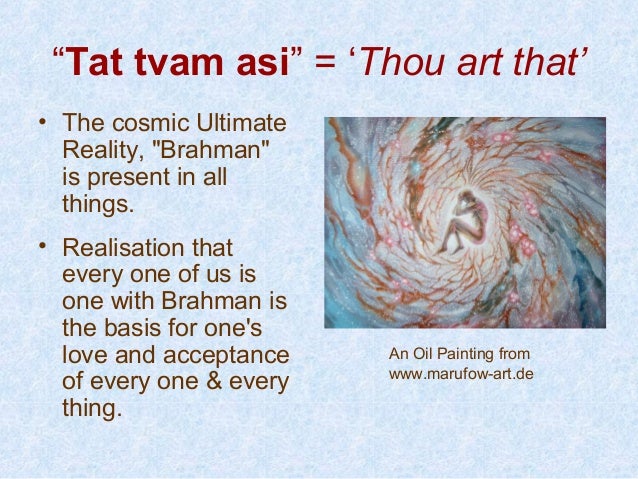Tat tvam asi , (Sanskrit: “thou art that”) in Hinduism, the famous expression of the relationship between the individual and the Absolute. Swami Vivekananda expounds THOU ART THAT - TAT TVAM ASI MAHAVAKYA IN CHANDOGYA UPANISHAD - Duration: 4:40. E began her career as a trained teacher, teaching English and is now the Chief Administrator of N. Tat twam asi (sanskrit: तत् त्वम् असि eller तत्त्वमसि), Det är du, är inom hinduismen ett uttryck som förklarar atman eller den individuella själens relation till brahman, världssjälen, eller det absoluta. Sri Adi Shankara interprets tat tvam asi to mean The jIva and brahman are identical so that there is no difference between the Atman of jIva and Brahman.

Sri Adi Shankara correctly assumes the svarUpa aikyam that is the absolute identity between the jIvAtman and the paramAtman (brahman). Die Dvaita-Interpretation ist, dass es eigentlich atat tvam asi heißen müsste, was „Du bist nicht das“ bedeutet. Tat Tvam Asi , Austin, Texas. Das erste a sei wegen der Regeln der Sandhi ausgefallen, weil der Satz davor mit einem langen a endet: sa ātmā, ’ tat tvam asi („das ist das Selbst, nicht das bist du“). Sri Madhvacharya had written a commentary on Chandogya Upanishad.
We have already seen that the Mahavakya was repeated nine times in the Upanishad.














